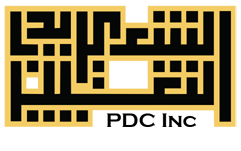The Most Dangerous Job in the World and its Future Payoff
News recently emerged that nearly half a million government documents have so far been smuggled out of Syria, gravely implicating President Bashar al-Assad and his regime of committing war crimes. The Commission of Justice and Accountability (CIJA) organized 50 local investigators to smuggle the documents out of Syria for analysis. Some have claimed those 50 local investigators have the most dangerous job in the world. A recent piece in The Guardian titled “Syria’s Truth Smugglers” detailed the dangers the investigators face.
Seeking Justice and Accountability in Syria
“They called us prostitutes and spat on our faces… I was hanged against a wall for three days, and frequently beaten with an electric cable. I used to pass out from the pain,” recalls a former Syrian detainee who was subjected to torture, including sexual and gender-based violence, at the hands of government security forces. The United Nations Human Rights Office conducted interviews with nearly 40 detainees who were released from detention centers throughout Syria. The stories of these individuals represent an infinitesimal fraction of the horror and inhumanity occurring in Syria that needs to be addressed.
Battle of the Sects or Tribal Interests
The conflict in Iraq is often described as a battle of the sects, with the vast majority of the Sunni Arab tribes being conflated with the militant Islamic State (ISIS) movement. This is understandable as there have been revolutionary, anti-Maliki government protests and increased tribal coordinated efforts within Iraq since the summer of 2013. However, while the Arab tribal revolutionaries are religiously Sunni and care about Sunni causes, they have separate goals and interests than that of the Islamic State.
The Syria Airlift Project: Using Drones for Good
Amid devastating barrel bomb attacks, chemical warfare, and growing extremism, the situation in Syria can often seem as if it’s taking place in a different world. Roughly 240,000 people are besieged and lack access to food and medicine. Another 7 million are considered difficult to access by humanitarian organizations because of the violence and chaos on the ground. There is a constant shortage of donations to support humanitarian efforts in Syria, and it sometimes seems as if the rest of the world has simply given up hope. But giving up on the Syrian people is simply not an option. We live in an advanced, innovative and small world, how can we justify not providing aid to people who are suffering so immensely?
One of PDC’s partners, The Syria Airlift Project, has created a new mechanism for aid delivery that has the potential to save lives with drones – yes, drones. The passionate individuals involved in the project are determined to “end starvation and medical deprivation as weapons of war.” Provided it receives proper funding and support, this technology could alter the face of the Syrian conflict and eventually help other areas in need of humanitarian aid. Mark Jacobsen, a founding member of the project and a C-17 cargo pilot for the U.S. Air Force, describes the likelihood of being targeted by anti-aircraft fire when operating massive transport planes in war torn areas. In contrast, the structure of these humanitarian drones is fairly simple and safe compared to its alternatives.
How will it work?
–Made from foam board, packing tape, and hot glue, the drones are small, cheap, difficult to target, and easily replaced (including autopilot, batter, and motor, each costs less than $500).
–They will be assembled by Syrian refugees in Turkey (a four-man team can make 10 per day), and decorated by Syrian children.
–The drones will deliver 1kg-2kg of food and medical aid to GPS coordinates provided by workers on the ground.
–30 will be launched per hour.
–After delivering aid, the drones will return to base in Turkey to be restocked and sent out again.
The software is called “Swarmify” and can be tracked on a laptop. Legal concerns are creating the biggest obstacle for the project. However, the group has identified the 12 core legal obstacles and is working to ensure that these won’t get in the way of this lifesaving technology.
The drones have already been successfully tested in California. The plan is to get more funding to increase production, move the technology to Turkey for a bigger test, and to eventually be implemented. It is important that the international community gets behind such momentous efforts to bring hope to those in Syria who have suffered for far too long.
Planet Syria’s Call for Solidarity Answered
As the conflict in Syria wears on, activists and supporters continue to seek new and innovative ways to stay involved, stay hopeful, and promote awareness. One such non-violent awareness and solidarity campaign, which garnered global response, happened this past Tuesday, April 7th hosted by Planet...





